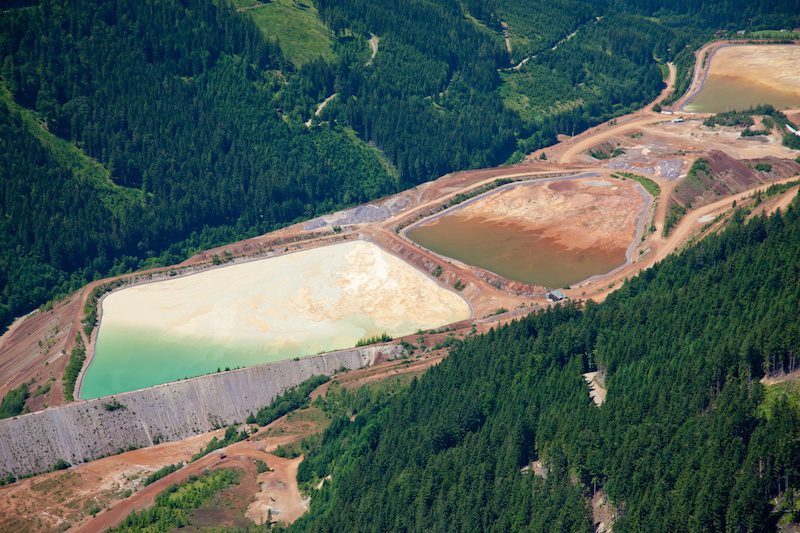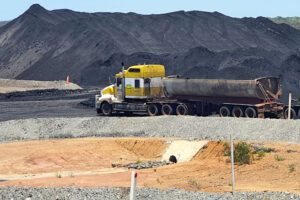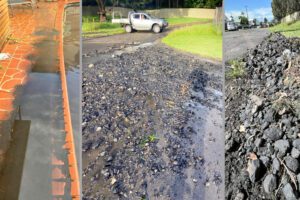A global foundation created to monitor and measure practices of mining companies has issued a statement in response to Vale’s Córrego do Feijão (Brumadinho) tailings dam disaster highlighting that there is a significant opportunity for improvement in tailings dam risk management practices.
The Responsible Mining Foundation said many of the world’s largest mining companies are not able to ‘know and show’ how effectively they are addressing the risks of tailings dam failure and seepage.
The report reads “The devastating failure of the tailings dam at Vale’s Córrego do Feijão mine site in Brazil brings into shocking focus a major risk of mining that remains inadequately addressed by many mining companies.
Tailings dam facilities – large surface impoundments of pulverised rock, water and processing chemicals – present some of the most common and most high-stakes risks to workers, communities and environments in the vicinity of mine sites.
worryingly, many of the world’s largest mining companies are not able to ‘know and show’ how effectively they are addressing the risks of tailings dam failure and seepage
Facilities are potentially prone to seepage, which can result in the contamination of ground and surface water.
This most recent event clearly illustrates unstable tailings dams can fail catastrophically, releasing large quantities of waste that can result in fatalities, bury homes, destroy livelihoods, smother rivers, and cause serious long-term impacts on workers, local communities and the environment.
A proven problem in the wider industry
The results of the 2018 Responsible Mining Index (RMI) reveal that, worryingly, many of the world’s largest mining companies are not able to ‘know and show’ how effectively they are addressing the risks of tailings dam failure and seepage.
The 30 mining companies assessed in Responsible Mining Index 2018 scored an average of only 22% on tracking, reviewing and acting to improve their tailings risk management, with Vale scoring slightly above average.
Fifteen of the 30 companies showed no evidence of keeping track of how effectively they are addressing these risks. And while 17 companies showed some sign of reviewing the effectiveness of their tailings risk management measures, no evidence was found of any of these companies publicly disclosing the extent to which they have taken systematic action on the basis of these reviews, to improve how they address tailings-related risks.
The wider results of the Responsible Mining Index 2018 show that companies are often failing to adequately share information on how they are managing social and environmental risks, particularly in providing meaningful site-level performance information.
Too often, workers, mining-affected communities, governments and investors are kept in the dark about the risks involved and how well companies are addressing these risks. Companies may be reticent to publicly reveal this potentially detrimental and sensitive information, yet it is workers and communities whose lives and livelihoods depend on adequate protection measures being in place.
Predictable disasters
The report states that “It is important to note that the Córrego do Feijão disaster, while of enormous scale, was not an isolated incident. A tailings dam failure in Italy in 1985 killed 268 people in two downstream villages.
Other more recent cases that have hit the headlines include the 2015 tailings dam failure at the Samarco mine site in Brazil, owned jointly by Vale and BHP, and the 2014 incident at Mount Polley mine site in Canada, owned by Imperial Metals.
In fact, tailings dam failures are occurring at a predictable rate. In 2015, Lindsay Newland Bowker and David Chambers examined past tailings dam failure data and projected ore production through 2019 and predicted 11 very serious failures for the decade 2010-2019 (which has now been reached with the Córrego do Feijão disaster).
Researchers at World Mine Tailings Failures have since taken into account the most recent failures and revised this total upwards to 14 very serious failures during this decade [1].
With readily accessible reserves of metals and minerals declining globally, the mining industry has begun to extract more lower-grade ores. The volume and nature of tailings produced by these operations make them much more challenging to store safely, significantly increasing the risk of more tailings dam failures. And the tighter profit margins of low-grade operations bring added risk that cost-saving may compromise investments in tailings safety management.
Preventable failures: potential solutions
A 2001 report by the International Commission on Large Dams examined 221 tailings dam failures and found them all to have been preventable [2].
So, what can mining companies do to reduce the risks of such catastrophic tailings dam failures? First, companies can more fully consider risks when designing, planning and constructing tailings dams.
A 2017 UNEP report calls for companies, regulators and communities to adopt a shared zero-failure objective to tailings storage facilities, and points to the recommendation of the panel that reviewed the Mount Polley disaster: that “safety attributes should be evaluated separately from economic considerations, and cost should not be the determining factor” in tailings management [3].
More fundamentally, companies can refrain from mining in areas where tailings dam failures are most likely until safer tailings management technologies are developed.
Failure risks are greatest for large, steep and old tailings dams in tropical zones where seismic activity and extreme weather events can precipitate dam failure. The type of dam that caused the recent disaster in Brazil – one built as part of a series of dams constructed upstream from the original dyke – is the most likely type of tailings dam to fail.
Vale has now committed to decommissioning all dams built by the upstream method and other companies can clearly follow suit. The decommissioning and removal of upstream dams and the transfer of tailings into safer storage facilities would require massive transparency and massive costs, so government regulators and investors would need to support these efforts to eliminate the known highest risk dams.
Responsible Mining Foundation supports calls for an international database on tailings dams, and encourages mining companies to consider the following basic measures to ensure more responsible tailings risk management:
- commit to maintaining the highest possible safety standards across all jurisdictions, beyond compliance with any legal requirements;
- commit to not use the riverine, lake or marine disposal of tailings;
- assign accountability and responsibility for tailings management at the highest levels of the company;
- invest in research and technology development for safer lower-risk approaches to tailings storage;
- adopt the best available technology from the earliest phases of project development;
- design tailings dams to a high factor of safety, taking into account extreme events and permanent post-closure stability;
- ensure that tailings dams are located away from communities and workers’ facilities;
- conduct frequent internal reviews of tailings facility performance and ensure that corrective actions are implemented on schedule and with an adequate budget;
- enable independent review and audit of site investigation and selection, design, construction, operation, closure and post-closure of tailings facilities, with public disclosure of the findings; and
- make all information related to tailings risks accessible to the public, including all internal and external reviews, emergency preparedness and response plans, and all relevant information about financial assurance provided for disaster management and recovery.
The Responsible Mining Foundation said “Stronger action to prevent tailings dam failure is vital to avoid the risk of more fatal consequences for workers and local communities and the widespread environmental damage and high clean-up and remediation costs that result from failure. In an era of lowering ore grade and mounting volumes of tailings, it is urgent to look beyond cost optimisation and ensure that mining benefits the economies, improves the lives of people and respects the environments of producing countries.”
________________________________
[1] Bowker, L.N. and Chambers, D. M. (2015). The Risk, Public Liability and Economics of Tailings Storage Facility Failures.
[2] ICOLD (2001). Tailings Dams Risk of Dangerous Occurrences: Lessons Learnt from Practical Experiences. Bulletin 121 (pp. 145). Paris, France: International Commission on Large Dams (ICOLD).
[3] Roche, C., Thygesen, K., Baker, E. (Eds.) 2017. Mine Tailings Storage: Safety Is No Accident. A UNEP Rapid Response Assessment. United Nations Environment Programme and GRID-Arendal, Nairobi and Arendal.
FEATURE STORIES – AMSJ reported that Vale knew of risks prior to the failure of the tailings dam.
Read more Mining Safety News














Add Comment